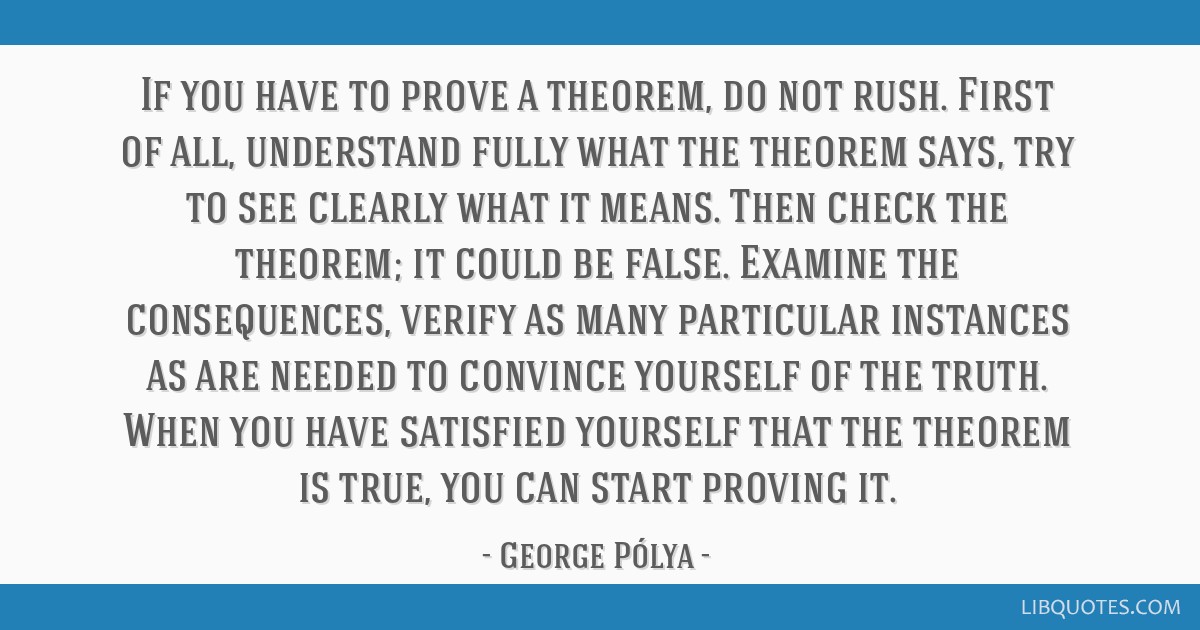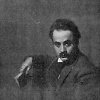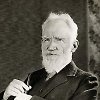If you have to prove a theorem, do not rush. First of all, understand fully what the theorem says, try to see clearly what it means. Then check the theorem; it could be false. Examine the consequences, verify as many particular instances as are needed to convince yourself of the truth. When you have satisfied yourself that the theorem is true, you can start proving it.
Mathematics and Plausible Reasoning: Induction and analogy in mathematics (ed. Princeton University Press, 1990) - ISBN: 9780691025094























